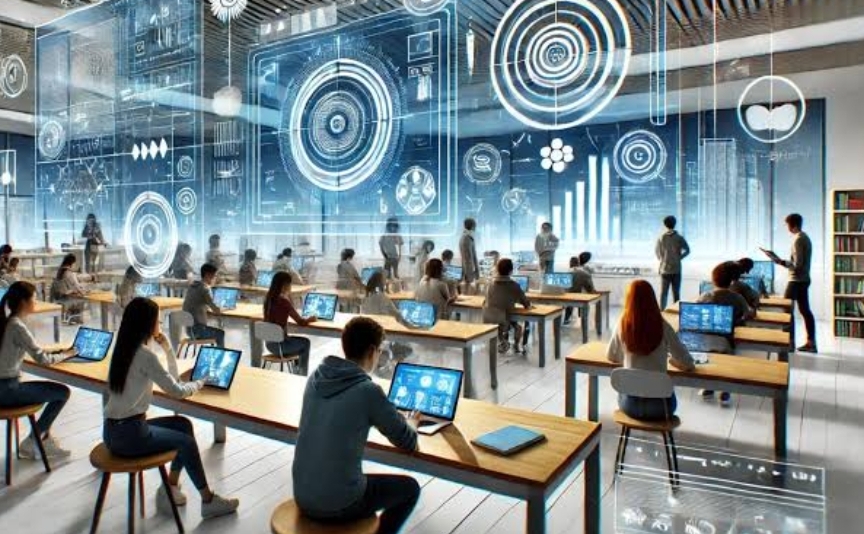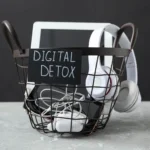
As we step into the digital age, the future of education is evolving at lightning speed. From virtual classrooms to personalized learning experiences, we are experiencing a massive shift in how students worldwide access education. But what if we could take it a step further? Enter blockchain, the technology known for powering cryptocurrencies. Now, it’s positioned as a potential disruptor in education, promising a decentralized, global classroom for all.
In this post, we’ll explore how blockchain could transform education, making learning accessible, transparent, and borderless. So, let’s dive into how this game-changing technology might reshape the future of learning.
- The Rise of Decentralized Learning
Traditional education is often centralized. Schools, universities, and governments control access to learning materials, courses, and certifications. However, with blockchain, education could move to a decentralized model, giving students more control. Imagine a system where students can access courses from educators worldwide, all without geographic or institutional barriers. Blockchain technology could create a global marketplace for learning that’s open and accessible to all. - Securing Student Records and Credentials
One of blockchain’s key strengths is its ability to securely store information. When applied to education, blockchain can hold academic records and credentials in a tamper-proof format. No more worrying about lost certificates or fake credentials. With a decentralized, blockchain-based system, students could have a digital “wallet” containing all their academic achievements, from degrees to micro-credentials. These records would be verified and easily accessible anywhere in the world, promoting global mobility and trust. - Enabling Micro-Learning and Skill-Based Courses
Blockchain can support a shift toward micro-learning and skill-based education. Instead of a single degree, imagine earning “micro-credentials” for each skill you master. Blockchain could allow educators to issue verified badges or certificates for each course completed. This would enable students to build personalized education paths, focusing on skills that directly apply to their career goals. It also makes lifelong learning more manageable, helping professionals stay updated with minimal time investment. - Peer-to-Peer Learning Platforms
Blockchain enables peer-to-peer interactions, creating a decentralized marketplace for teachers and learners. Imagine platforms where teachers worldwide upload lessons or offer live tutoring, and students can directly purchase these resources using cryptocurrency or tokens. This setup eliminates intermediaries, allowing educators to reach learners directly, and creating an inclusive global classroom where anyone can learn from the best minds around the world. - Reducing Educational Costs
Education can be expensive, with costs often excluding many students from quality learning. By cutting out middlemen, blockchain-based education platforms can make learning more affordable. Educators can charge minimal fees for their content, while students access high-quality, low-cost education from experts worldwide. This model could make education accessible to students from low-income backgrounds, further democratizing learning opportunities. - Improved Transparency in Education
Transparency is a critical issue in today’s education system, from unclear grading systems to a lack of visibility into institutional processes. Blockchain’s decentralized ledger makes all transactions visible and traceable, increasing accountability. Grades, assessments, and even curriculum decisions could be recorded on the blockchain, allowing students, parents, and institutions to view this data. Such transparency could promote fairness and consistency across the global education landscape. - Using Smart Contracts to Streamline Administration
Smart contracts are self-executing agreements on the blockchain that automatically trigger actions when conditions are met. In education, they can be used to automate administrative tasks, such as enrollment, grading, or even tuition payments. For example, when a student completes a course, a smart contract could instantly issue a digital certificate. Or, tuition payments could be programmed to release in installments as courses progress. Smart contracts could streamline operations, reducing bureaucracy and improving efficiency in educational institutions. - Overcoming Cultural Barriers
Blockchain-powered education platforms are inherently global. By fostering a decentralized classroom, students can access learning resources from different countries and cultures. This approach exposes learners to diverse perspectives, making education more holistic and globally inclusive. Furthermore, translation tools integrated with blockchain-based courses could help overcome language barriers, enabling students from various backgrounds to learn seamlessly. - Encouraging Community-Based Learning
Blockchain promotes community-based learning, where students can collaborate, share resources, and help each other succeed. Decentralized platforms could incorporate social tokens that reward students for participation, knowledge-sharing, or completing group projects. This form of peer-led learning builds strong, supportive educational communities and enhances the learning experience. - Case Studies: Blockchain in Action
Countries like Malta and South Korea are already testing blockchain-based education systems. Malta has integrated blockchain into its national education framework to store student records securely. South Korea is exploring blockchain for verifying credentials, aiming to make student records accessible anywhere, anytime. These examples show that blockchain isn’t just a theoretical idea; it’s already happening and could soon become a norm in educational institutions worldwide.
Challenges of Blockchain in Education
While blockchain holds great potential, challenges still exist. Implementing a decentralized education system requires significant resources, cybersecurity measures, and data privacy standards. Moreover, the technology is still relatively new in education, so institutions must invest time and money to integrate blockchain effectively.
Conclusion
Blockchain could redefine the future of learning, creating a decentralized, global classroom accessible to anyone, anywhere. By fostering transparency, reducing costs, and enhancing security, blockchain is paving the way for an inclusive education system that transcends borders. As this technology advances, it’s only a matter of time before we see blockchain becoming a foundational element in education.
So, are you ready to embrace the future of learning? With blockchain, we could be on the cusp of an educational revolution that empowers every student globally.
Start exploring the possibilities today and stay tuned for more insights on tech and education!
Did you find this topic interesting? Share your thoughts on how blockchain could transform education in the comments below! Let’s connect and learn together!










